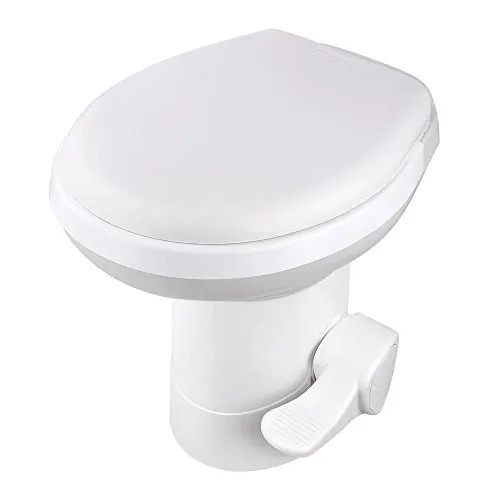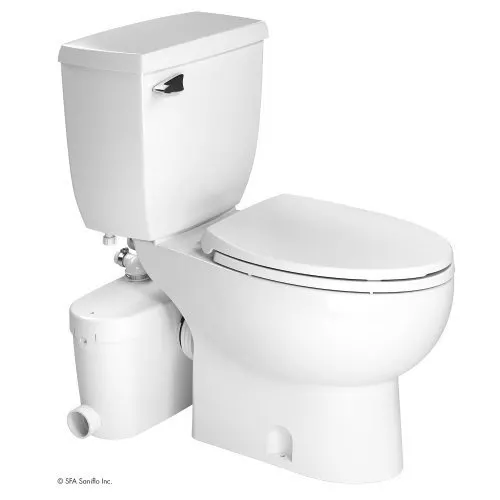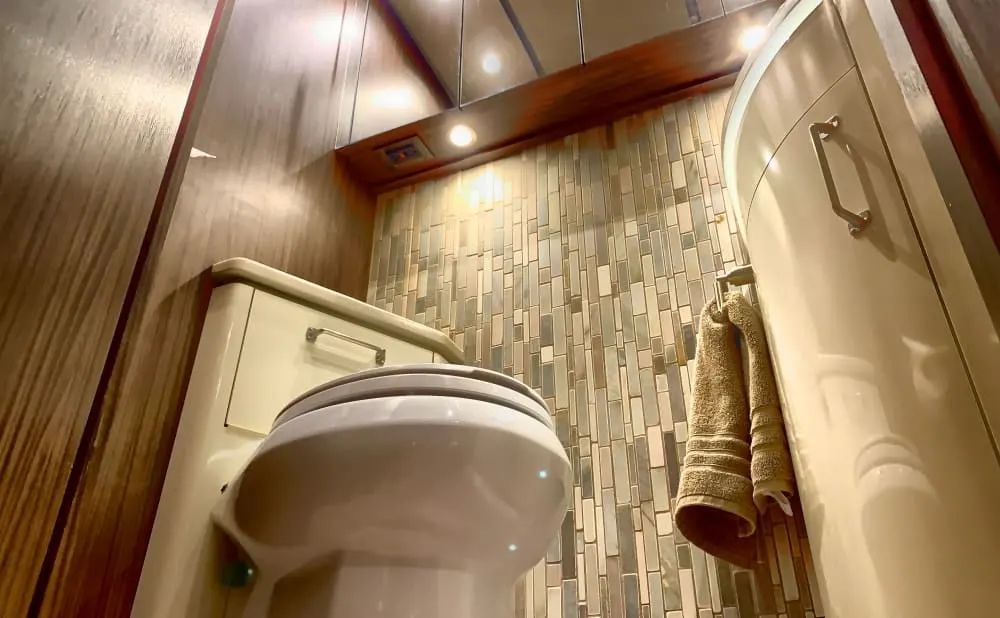
When dreaming about your future cruising the country in an RV, probably don’t spend much time thinking about the type of toilet your vehicle will have. But nothing can ruin a great trip faster than a bad bathroom experience. Depending on your travel plans, the size, and shape of your RV, and your own preferences, you may choose a super simple or a more complex option.
Related: Best Peer-to-Peer RV | Lightweight Travel Trailers | Types of RV Sinks | Outstanding Teardrop Camper Kits | RV Camper Brands
1. Gravity Flush Toilets
The most common and traditional RV toilets are gravity flush systems, which, you guessed it, rely on gravity to flush away the contents. These toilets need to be connected to a source of pressurized water so that it can flush similarly to your toilet at home. Most commercial RVs come equipped with a gravity flush toilet and the infamous black tank used to store waste until you dispose of it at a designated dump site.
The size and style of a gravity flush toilet vary just as much as traditional toilets, allowing you to choose the model that fits your height and size specifications. If you have plenty of room you can choose a high toilet with an elongated bowl for added comfort, but if space is an issue you can opt for a smaller, round option that will still get the job done. Either way, the toilet will flush its contents into the black tank. You can purchase chemicals to break down solid waste into a more manageable consistency and prevent blockages and make dumping simpler.
Since gravity flush toilets have stood the test of time, they’re well understood in the industry and are typically easy to repair or replace. They’re also less expensive than most other options. You will have to periodically go through the process of emptying your tank, which can be smelly and messy if you aren’t experienced and can only be done at a designated dump site. You may also experience clogs, persistent odor, and other issues if you’re not careful.
2. Macerator Toilets
If you prefer something fancier than the traditional gravity flush toilet, a macerator system may be more your style. Macerator toilets grind contents into a slurry that can be stored until it can be disposed of. Most macerator toilets are electric, although there are some water-powered models on the market. One major benefit of a macerator toilet over a traditional gravity flush system is that a macerator system can defy gravity. That is, the slurry can be pumped through a hose using electricity, meaning the holding tank does not always have to be positioned directly below the toilet tank. That may solve some space constraints and give you more options on where you put your toilet.
Macerators typically use just a one-inch hose, smaller than the traditional three-inch hose common to a more traditional system. The smaller hose often means a cleaner, simpler dump process with less smell and a lower potential for disaster. Waste can also be pumped uphill and you may have more options for where to dump the waste since the smaller tube allows for greater flexibility. We can’t promise you’ll enjoy dumping your waste with a macerator system, but you shouldn’t dread it as much as you did in the old days.
Before you go all-in on a macerator toilet, consider that they can cost quite a bit more than a traditional system. Disposing of waste, while a cleaner process, can take longer (since the tube is smaller) and require a specific technique. If you’re not careful pressure can build up in the tube, causing an unpleasant mess. You also need to monitor the entire process to ensure the pump doesn’t run dry or blow a fuse. You should expect to use more water than you would be cleaning a traditional system.
If you’re not a fan of regular maintenance, a macerator system may not be for you. If the pump is not cleaned regularly it will likely slow down over time and test your patience as you’re waiting to get on with your next adventure. Even worse, if anything solid makes it way into your macerator system it won’t break down properly and will get stuck in your pumps. Low water may prevent the slurry from being flushed completely out and cause additional build-up. Plan to completely clean your macerator system at least once a year to prevent build-up that would lead to poor performance and bigger maintenance issues.
Read more about what makes macerator systems unique.
3. Cassette Toilets
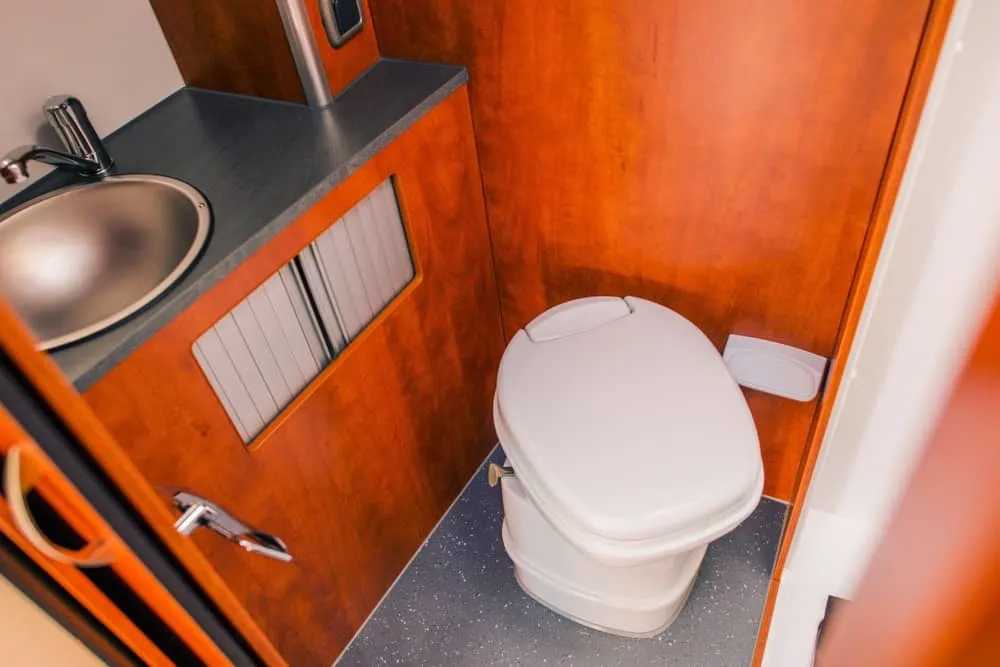
Cassette toilets occupy space somewhere between the traditional gravity flush toilets with their large holding tanks that must be dumped in a designated dump station, and portable and composting toilets that are easily movable but need to be dumped often. Cassette toilets are permanent and fixed to your RV; they can’t be moved or relocated. But the holding tank is portable and can be completely removed from the RV. That means it can be dumped in a traditional toilet or other waste receptacles without dealing with a wide tube and possible spills.
The toilet portion of a cassette system is relatively similar to a gravity flush toilet, with a valve to control the flow of water into the bowl. The piece that makes the cassette toilet special is the portable holding tank, which is accessible from a hatch on the outside of your RV. The tank can be removed and carried or rolled to the dumping station, then easily cleaned and replaced.
Since cassette toilets have a higher capacity than composting or portable toilets, they’re a great option for families or larger groups who want to avoid the hassle of a traditional gravity flush system. Keep in mind that a full holding tank can be heavy—up to 40 pounds—and therefore more cumbersome than the smaller types of toilets.
4. Composting Toilet
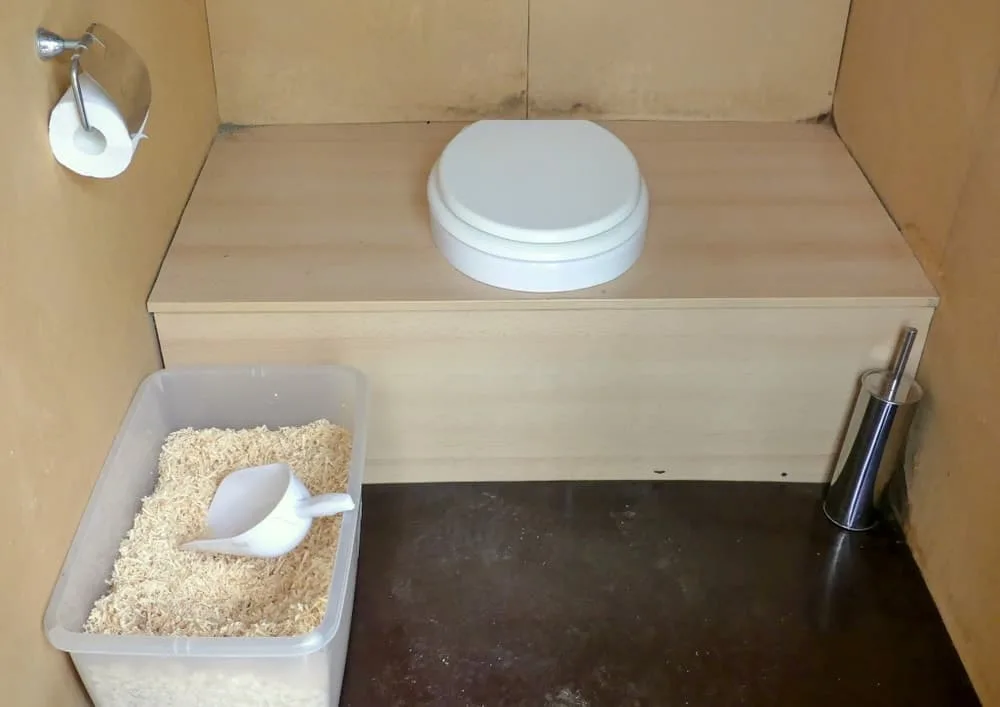
If you’re really roughing it and don’t have access to a regular water supply or traditional dumping stations, you should look into a composting toilet. With this type of toilet, liquids and solids are stored separately and a composting material like sphagnum peat moss or coconut coir (you know, normal items on your grocery list) is used to break down the solids. There’s no large holding tank, no tubes to clog, and no water usage. Once you get the hang of using it, a composting toilet can be a great option for one or two people enjoying a rustic lifestyle.
Since there’s no large holding tank, a composting toilet needs to be emptied more frequently than other types. If you have a large family or lots of guests, this may be a deal-breaker for you. They’re also expensive and require some studying to understand how to use it. If you’re a casual RVer looking for a cheap and simple option, stick to something more traditional.
The compact, simple design of composting toilets means you avoid many of the typical RV toilet headaches like clogs, odors, and dump stops. The unique two-compartment design of composting toilets means that it won’t smell if used properly. But, that “used properly” phrase is very important. Failure to empty or clean the toilet can lead to a very messy situation since the waste is sitting right there in the tank.
Read one couple’s personal testimony on the benefits of a composting toilet.
5. Portable Camping Toilets
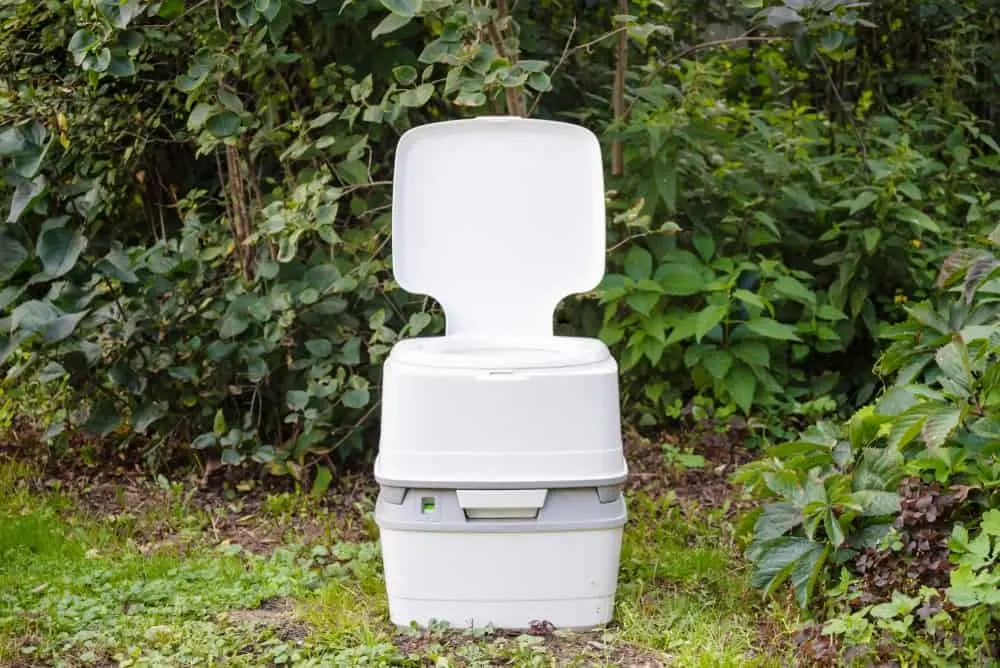
If your primary goal is something easy to use with minimal setup and a short learning curve, a portable camping toilet may just work for you. This is a simple toilet that can be placed anywhere you desire. Its design is pretty simple—a commode with a small holding tank attached directly to it. The small tank can be dumped in a traditional toilet or dump station. You can get in, get out, and get on with your life. If you’re off on a more rustic adventure away from your RB, you can bring your portable toilet with you.
For all the convenience though, portable camping toilets come with some serious downsides. The main negative is that you must dump a tank of raw sewage directly—no tubes or composting material to obscure it. Composting toilets store different types of waste in different holding tanks to minimize the smell—that’s not the case in a traditional portable toilet. Everything goes in together and comes out together, leading to a pretty serious sewer smell if not emptied and cleaned regularly.
If you’re looking for something simple and hassle-free, and aren’t easily grossed out, a portable toilet may not be a bad option. They also use less water (or no water, in some cases) than many other options and don’t need to be hooked up to your RV. If you’ll have multiple people using it though, you’ll find yourself emptying it a little more frequently than you prefer.
Frequently Asked Questions
How Do I Choose the Right System for me?
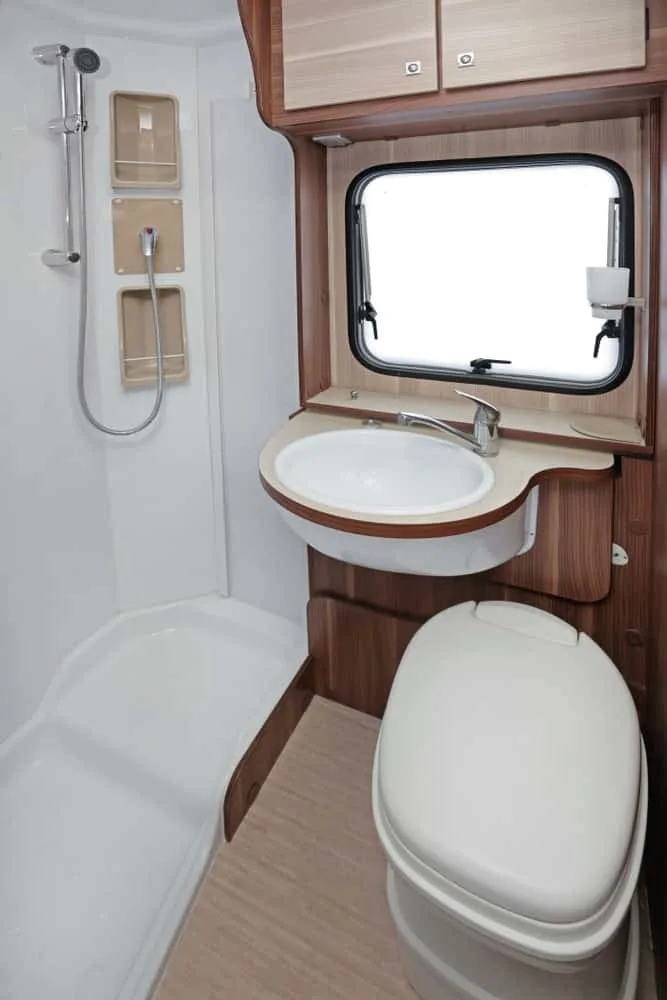
The answer depends on a variety of factors. To get to the bottom of it, consider these questions.
- How many people will use the toilet? Smaller options like composting and portable toilets are great for one or two people but not as practical for larger groups (unless you want to turn to empty the tank into a nightly ritual).
- Where will you be camping? If you’re primarily stopping in RV parks, a gravity flush or macerator system will work just fine since you’ll have regular access to dump stations. If you’ll be more off the beaten path and spending a lot of time parked in more remote locations, you might want to consider an option with more versatile dumping options.
- What’s your budget? Gravity flush systems are typically fairly low cost and don’t require a large up-front investment, making them great for those trying to RV on a tight budget. But if you have a little more to spend, a macerator system or composting toilet may save you some of the inconvenience that comes with the more old-school system.
- Are you good at keeping up with regular maintenance? If you don’t trust yourself to put in the work necessary to maintain more complicated systems, stay away from a macerator system or a composting toilet. Failure to keep a macerator system clean can lead to some nasty backups. Forgetting to empty your composting toilet for too long can mean the two tanks combine and cause a nasty stench. Stick with a simpler gravity flush or cassette system to be on the safe side. Keep in mind, though, that any RV toilet system, like many other aspects of RV life, requires some amount of maintenance. And considering the possible consequences, bathroom maintenance is probably not where you want to skimp.
- Do you have a small or strangely configured space? Traditional RVs will have no problem accommodating a gravity flush system, or any other type you’d prefer to use. But if you have a smaller vehicle or a more unique setup, a different option may be right for you. Macerator systems allow the holding tank to be located in a different location from the toilet itself, giving you more configuration options. Cassette toilets take up less space than traditional systems and composting and portable toilets are even smaller. Smaller size equals more frequent dumps, but that may be a worthwhile trade-off depending on your space constraints.
What Type of Toilet Paper Should I Use?
If you’re picky about your toilet paper and need a special luxury brand to keep comfy you may not be cut out for RV life. Or you may want to go the trash can route and keep your fancy toilet paper out of your waste system altogether. RV toilets require a special type of toilet paper that dissolves easily in water to avoid blockages. Using the wrong type of TP can wreak havoc on your whole system and lead to costly repairs.
For composting and portable toilets, you may end up sticking your toilet paper in the trash anyway. If that’s the case, go to town and use whichever type you’d like. But if you have a larger system with a decent sized holding tank, and if you want to feel more at home and less like your camping, choose RV-friendly toilet paper and you won’t have an issue.
To be on the safe side and eliminate guesswork stick to specially labeled RV toilet paper. This stuff is designed to dissolve correctly but may not be strong or comfortable as what you’re used to. If you want to expand your options, go ahead and shop in the regular toilet paper section, but perform a simple test to ensure your brand of choice is suitable for your RV. Put a couple of sheets in some water and make sure they’re completely covered, let it sit for at least an hour, and come back to check on the result. If the toilet paper had dissolved or can be easily shredded, it should be safe to put into your toilet’s holding tank. Just note that the more toilet paper you use, the more often you’ll have to empty that tank.
How Do I Prevent Odors?
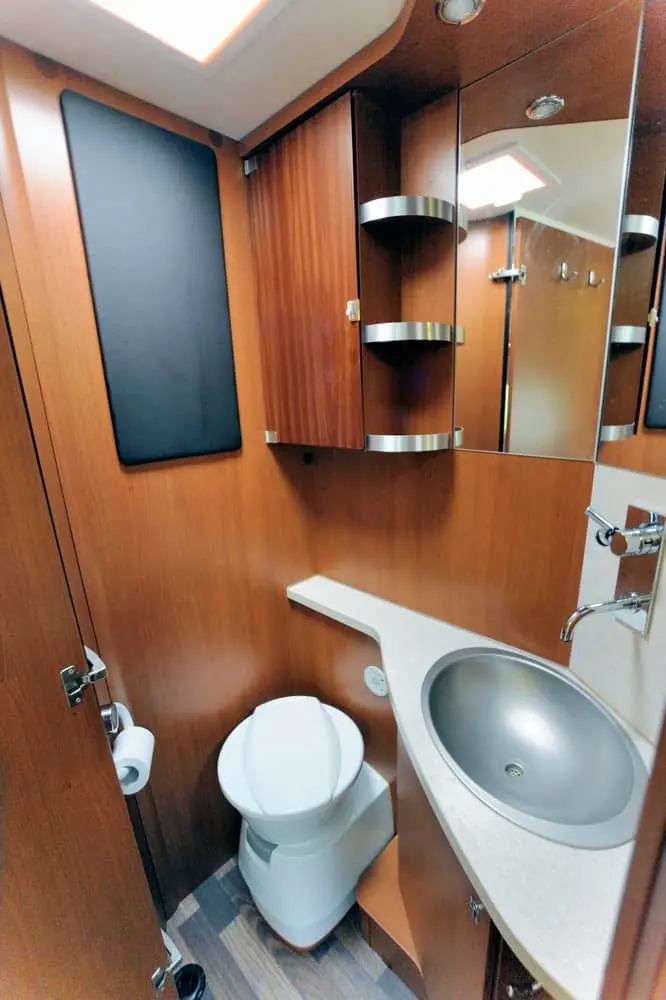
This will vary based on the type of toilet you use, but it all comes down to regular cleaning and maintenance (you know, just like at home). For composting and portable toilets, regularly emptying the tank is the key to success. For other systems with larger holding tanks, you can purchase chemicals meant to break down waste and eliminate odors. Some recommend flushing vinegar into the toilet to accomplish the same thing without creating a chemical smell.
Whichever type of toilet you choose, you’ll likely be pleasantly surprised that it’s not as hard as you think to prevent smells from permeating your RV.
How Do I Keep My Toilet Clean?
Cleaning an RV toilet is not all that different from a traditional toilet. Sanitize the seat and rim, and use a toilet brush to scrub out the bowl. Just make sure any product you use is safe for use in RVs and septic systems. Once your toilet is clean, don’t forget to address the holding tank. Keeping that important component clean will eliminate odors and get rid of the buildup that can negatively affect the performance of your system.
How Can I Fix Clogs in My Toilet?
In many cases pouring hot water down your toilet will dissolve the clog and fix the issue. If that doesn’t work, try a product designed to fix toilet clogs, but make sure you choose a product that’s septic safe. Some of the more abrasive chemicals will get rid of the clog but leave you with a whole new set of unpleasant issues.
Related: RV Rental Website and App | Types of RV Tires | Types of RV Furniture | Types of RV Interior Lighting Ideas

